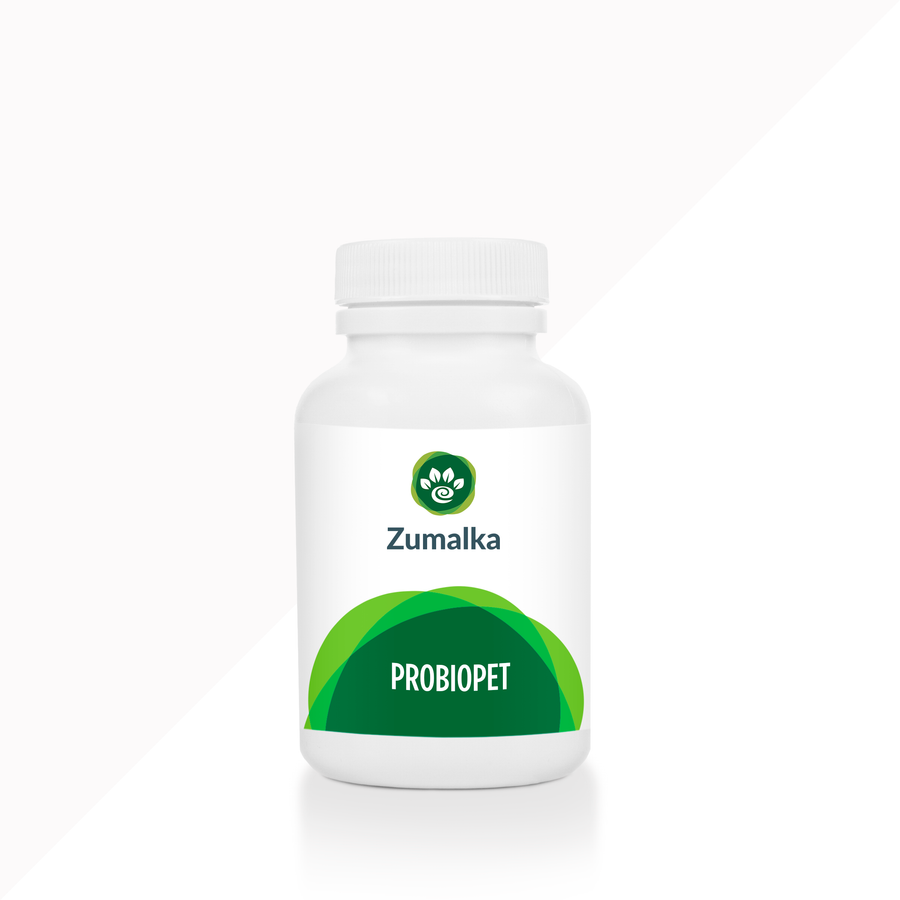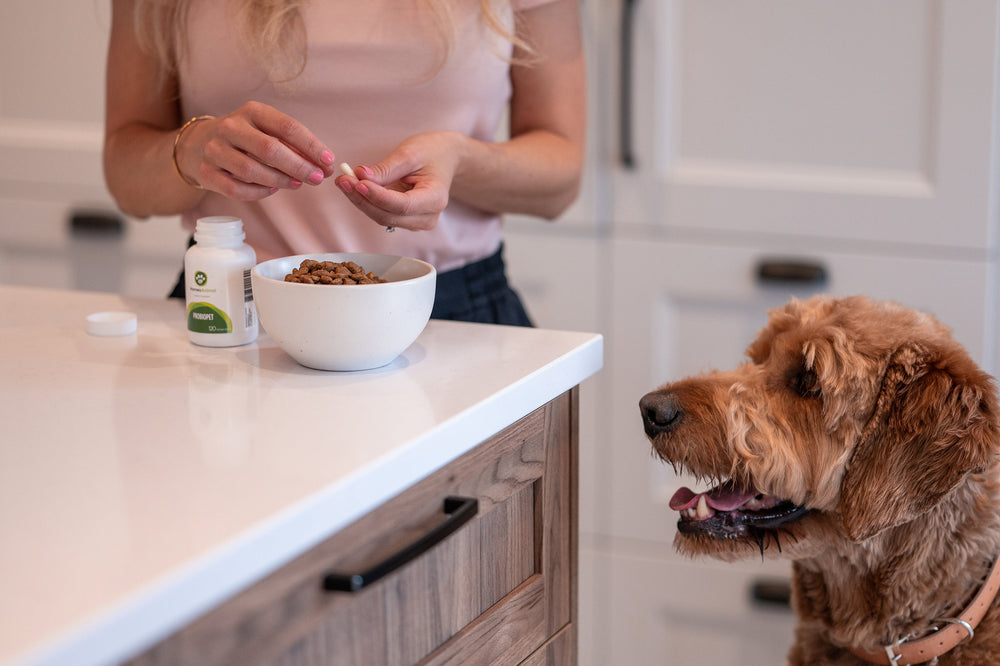Dog Poop Like Jelly With Blood: 7 Expert Steps You Must Take
List of Contents
Seeing jelly-like dog poop with blood can be alarming and often points to colitis, an inflammation of the large intestine. The mucus is produced by the colon as a protective response to irritation or infection.
This distinctive stool can signal anything from mild digestive upset to a serious condition like Acute Hemorrhagic Diarrhea Syndrome (ACDS) or hemorrhagic gastroenteritis (HGE). Prompt recognition is key, as some cases may require immediate veterinary care.
Knowing the difference between a mild case and a medical emergency can save your dog’s life. Learn when to monitor, when to seek urgent veterinary care, and how a certified pet homeopath may support recovery.
Red Flag Alert: Why Blood and Jelly in Dog Poop Can Mean an Emergency
Mucus and blood in your dog’s stool often point to colitis, an inflammation of the large intestine. This jelly-like poop is the colon’s response to irritation, infection, or dietary triggers.
The difference between mild and serious cases
Mild cases often involve small amounts of bright red blood or mucus, with your dog otherwise acting normal and eating well. These cases may resolve within 24–48 hours, but a vet visit is recommended if symptoms persist.
Serious cases may involve stool that looks like raspberry jam, large amounts of blood, frequent straining, lethargy, vomiting, loss of appetite, or pale gums. These signs may indicate conditions like HGE or AHDS and require immediate emergency veterinary care.
Life-threatening causes of bloody, jelly-like stool in dogs include HGE or AHDS, Parvovirus in puppies, severe intestinal blockages, and bleeding disorders. Prompt diagnosis is critical to begin life-saving treatment.
7 Critical Steps to Handle Bloody, Jelly-Like Dog Poop

Bloody, jelly-like dog poop is a serious symptom that should never be ignored. These 7 critical steps will help you respond quickly, protect your dog’s health, and know when emergency care is needed.
These 7 steps cover everything from emergency action for severe cases to at-home care for milder symptoms. You'll also learn key prevention strategies to protect your dog’s digestive health long term.
#1. Check severity and call an expert
Start by assessing the severity of your dog’s symptoms, including the color and amount of blood in the stool. If you notice vomiting, lethargy, or abdominal pain, contact a veterinarian immediately. Consulting a certified pet homeopath may also support your dog’s recovery.
If your dog is weak, has frequent bloody diarrhea, or passes dark, tarry stool (melena), it may be a medical emergency. Home remedies can be helpful for mild symptoms, but they are not sufficient for severe cases. In those situations, prompt veterinary attention is essential.
#2. Rehydrate your dog with small, frequent amounts of fluid
If your dog isn’t vomiting and symptoms are mild, offer small amounts of water frequently to prevent dehydration. You can also let them lick ice cubes to keep hydration gentle and steady.
Bloody diarrhea can lead to rapid dehydration, especially in puppies and small breeds. Offer fluids slowly, as giving too much at once may trigger vomiting and worsen their condition.
#3. Start a pro-guided fasting or a bland diet for your dog
Avoid feeding your dog until you’ve consulted a veterinarian. In mild cases, a vet may recommend a short-term bland diet, such as boiled chicken with white rice or plain canned pumpkin, to support gentle digestion and recovery.
An easily digestible diet gives the inflamed GI tract a chance to rest and heal. It can also help reduce symptoms like blood and mucus in your dog’s stool.
#4. Add expert-recommended probiotics for dogs
Talk to your veterinarian or a certified pet homeopath about probiotics formulated specifically for dogs. The right probiotic can help restore healthy gut bacteria and support recovery from digestive upset.
Probiotic supplements help restore your dog’s natural gut flora, which is often disrupted during digestive upset. They’re a valuable addition to many treatment plans for conditions involving blood or mucus in the stool.
#5. Reduce environmental stress for your dog
Give your dog a calm, quiet space away from children, other pets, and noise. Speak softly and move gently to help reduce stress and support recovery from digestive issues. Stress is a common trigger for colitis in sensitive dogs, often resulting in bloody or mucus-filled stool. Managing stress is key to both prevention and recovery.
#6. Gradually switch your dog’s food to prevent GI upset
When switching your dog’s food, treats, or chews, always transition gradually over 7–10 days. A slow change helps prevent digestive upset, including mucus or blood in the stool. Sudden dietary changes are a leading cause of gastrointestinal upset in dogs. They can trigger inflammation and lead to symptoms like bloody or mucus-filled stool.
#7. Protect your dog with year-round parasite prevention
Follow your veterinarian’s advice on year-round, broad-spectrum parasite prevention for your dog. Regular fecal testing, at least once a year, helps detect hidden infections before they cause serious digestive issues.
Intestinal parasites like hookworms, whipworms, and Giardia are common causes of diarrhea, irritation, and bloody stool in dogs. Preventing these infections is key to protecting your dog’s digestive health year-round.
Long-Term Tips to Protect Your Dog’s Digestive Health

Maintaining your dog’s digestive health is key to preventing recurring issues like colitis, diarrhea, and bloody stool. These long-term tips can help support a healthy gut and reduce the risk of future flare-ups:
Feed your dog a high-quality diet to support gut health
Feeding a high-quality diet plays a key role in maintaining your dog’s digestive health. Make sure their food is nutritionally balanced and appropriate for their age, breed, and medical needs. A proper diet helps prevent inflammation, support gut function, and reduce the risk of bloody or mucus-filled stool.
Prevent your dog from eating toxic or unsafe items
Dogs often explore the world with their mouths, which can lead to dangerous ingestions. Keep trash, toxic items like rat poison, and human medications safely out of reach. Chewing or swallowing non-food objects, such as bones, sticks, or toys, can cause digestive upset or life-threatening blockages.
Schedule regular vet checkups and certified pet homeopath consultations for your dog
Regular veterinary exams are key to detecting hidden health issues early, including kidney or liver problems that may affect digestion. Catching these conditions early can help prevent symptoms like bloody or mucus-filled stool. A certified pet homeopath can complement your dog’s care by supporting long-term digestive balance and overall wellness.
Boost your dog’s immune system naturally
A strong immune system helps keep your dog healthy, active, and resilient. Choosing a reliable, premium natural supplement can make all the difference. Zumalka’s IMMUNOPET offers targeted, vet-approved support to naturally boost your dog’s immune defenses.
IMMUNOPET is crafted to support your dog’s immune system with a potent blend of plant-based ingredients. It helps promote healthy blood and lymphatic function while enhancing white blood cell activity to defend against common bacterial and viral threats. Gentle, easy to administer, and ideal during times of increased health need, it’s a smart addition to your pet’s daily wellness routine.
Additionally, during digestive disturbances, Zumalka’s TUMMYPET provides natural support for your pet’s digestive system.
The Bottomline
Blood and mucus in your dog’s stool, especially when it looks like jelly, can signal anything from mild colitis to a life-threatening condition. When in doubt, always consult a veterinarian to rule out serious causes. A certified pet homeopath can also provide supportive care to help restore balance and promote long-term digestive health.
If you're unsure how serious your dog’s symptoms are, don’t wait! Contact your veterinarian or an emergency clinic right away. Acting quickly can be lifesaving when it comes to digestive issues like bloody or jelly-like stool. A calm environment, steady hydration, and timely professional care offer your dog the best chance at a full and safe recovery.
FAQs
What causes dog poop to look like jelly with blood?
This appearance often indicates inflammation in your dog’s digestive tract. The jelly-like mix of blood and mucus usually results from irritation in the intestinal lining, most commonly in the large intestine (colon).
Colitis, an inflammation of the large intestine, commonly causes a combination of mucus and blood in the stool. The jelly-like mucus is produced by the colon as a protective response to irritation.
Common causes of colitis in dogs include sudden dietary changes, food allergies or intolerances, intestinal parasites like whipworms or Giardia, bacterial infections, stress, and inflammatory bowel disease (IBD).
More severe cases may be caused by Acute Hemorrhagic Diarrhea Syndrome (AHDS), also known as Hemorrhagic Gastroenteritis (HGE).
When is bloody, jelly-like stool considered a veterinary emergency?
Bloody, jelly-like stool in dogs can range from a mild issue to a life-threatening emergency. However, urgent veterinary care is often necessary in more serious cases. Seek immediate attention if your dog shows any of the following symptoms:
- If your dog’s bloody stool is accompanied by other serious symptoms, the risk of a life-threatening condition increases. Look for signs like vomiting, lethargy, pain, or pale gums, possible indicators of shock.
- Bloody, jelly-like stool is especially concerning in puppies and senior dogs. Young puppies are at higher risk for serious infections like Parvovirus, while older dogs may have underlying conditions that require prompt attention.
Why might a dog seem normal even though they have bloody, mucous stool?
Some dogs may still seem active and eat normally, even while passing stool with blood and mucus. This is often linked to mild colitis caused by short-term triggers such as dietary changes, stress, or minor infections.
Mild colitis in dogs is often triggered by short-term stress or dietary indiscretion. Situations like moving, boarding, or consuming unfamiliar food can irritate the colon and result in stool with blood and mucus.
Straining during diarrhea or constipation can irritate the rectum and lead to small streaks of blood in your dog’s stool. This is usually minor but should still be monitored, especially if symptoms persist or worsen.
Even if your dog seems otherwise healthy, it's important to monitor for any changes in behavior or appetite. Mild symptoms can quickly escalate if the underlying cause is serious, so contacting your veterinarian is always a wise step.
Can bloody stools or diarrhea be fatal for a dog?
Certain causes of bloody stool in dogs, such as severe infections or gastrointestinal conditions, can be fatal without timely treatment. Early veterinary intervention is crucial to protect your dog’s health and prevent serious complications.
- Dehydration and shock: If the blood loss is significant, or if it is combined with the severe loss of fluid through vomiting or diarrhea (as occurs with HGE/AHDS), the dog can become severely dehydrated and go into shock. Severe dehydration can lead to a thickening of the blood and potentially cause a fatal clotting disorder called disseminated intravascular coagulation.
- Life-threatening conditions: Conditions such as HGE, parvovirus (especially in puppies), bleeding disorders (like those caused by rodenticide poisoning), and systemic diseases require immediate intervention and can be fatal if untreated.
Can blood in a dog’s stool resolve on its own, or does it always require veterinary care?
Minor cases of bloody diarrhea or small streaks of blood can sometimes resolve at home with careful monitoring. Supportive care, such as a vet-approved bland diet and dog-specific probiotics, may help improve symptoms within a few days.
Experts universally recommend consulting a veterinarian if you notice blood in your dog’s stool. Schedule an appointment or seek emergency care if any of the following warning signs are present:
Persistent or worsening bloody stool is a clear sign that something more serious may be going on. Large amounts of blood in your dog’s stool always warrant prompt veterinary attention.
When bloody stool is paired with vomiting, lethargy, or a loss of appetite, it may signal a more serious health issue. If you’re uncertain about the severity, contact your veterinarian promptly to ensure your dog receives timely and appropriate care.








Hi Nancy, we would be glad to help your cat with a free email consultation with our homeopath. Please write to support@zumalka.com and we can get you started.
Do the above apply to cats as well?
Leave a comment